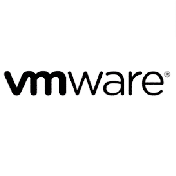Seminarinhalt
Course objectives
After completing this course, you should be able to:
- Articulate the top use cases Zerto supports and what architectures are needed for each use case
- Describe the major Zerto components and how they interoperate
- Install, set up, and configure Zerto in a vSphere environment
- Protect virtual machines replicating locally and to a secondary peer site
- Perform the most common recovery operations, including file restores, failover tests, live failover, and moves
Programm
- Define Zerto platform
- Explain Zerto platform functionalities
- Zerto components
- Zerto use cases
- Complete data protection with Zerto and HPE
Module 2: Zerto Virtual Manager Appliance (ZVMA)
- Define Zerto Virtual Manager Appliance (ZVMA)
- Requirements
- Resources
Module 3: Virtual Replication Appliances (VRAs)
- Virtual Replication Appliance (VRA) overview
- What Is a Virtual Replication Appliance? (VRA)
- VRA deployment
- VRA: source versus target summary
- VRA helpers overview
- VRA setup and load balancing
Module 4: Architectures
- Basic on-premises architecture
- Operational recovery architecture – Local, same-site replication with optional offsite copy
- Disaster recovery architecture – Replication to remote site for classic DR
- DR with extended journal copy architecture – Remote DR with additional copy on the DR site or sent so to the cloud
- Operational recovery and DR architecture – Local replication plus DR site and additional copy from
Module 5: Journal
- Journal overview
- Journal-based recovery
- Journal technology
- Journal Settings and Sizing
- Journal history
- Journal size hard limit
- I/O considerations
- Estimating journal sizing
Module 6: Zerto Replication
- Zerto replication overview
- What Is a Checkpoint?
- What is write-order fidelity?
- Replication types
- Replication: Initial Sync
- Replication: Bitmap Sync
- Replication: Delta Sync
Module 7: Virtual Protection Groups (VPG)
- Virtual Protection Group (VPG) overview
- Consistent protection and recovery
- Creating VPG: Four main options
- Three Types of VPGs
- Remote DR and continuous backup VPG
- Local continuous backup VPG
- Data mobility and migration VPG
- VM Auto-Protect
- VPG replication prioritization overview
- VPG replication prioritization in GUI
- One-to-many overview
- Exclude disks
- VPG considerations
Module 8: Real-time Encryption Detection
- Anatomy of an Attack
- Backup-based Detection is Inadequate
- Earliest warning when an attack is occurring
- Replicate and Detect
- Zerto Resilience Observation Console
- Encryption Analyzer
- Collection phase
- Inspection phase
- Reaction phase
- Alerting
- Tagging
- User Response
- Considerations
Module 9: File and VM Restores
- Instant Restores of Files, Folders, and VMs
- Instant File/Folder Restores
- Recovery Operations: File Restore
- Restore Limitations
- File Restore Process
- Instant VM Restores
Module 10: Recovery Concepts
- Recovery Operations: Key Concepts
- Scratch disk size and location
- Commit Overview
- Commit Policies
- None
- Auto-Commit
- Auto-Rollback
- Commit Policy Considerations
- Reverse Protection Overview
- VM Shutdown Options
Module 11: Recovery Operations: Failover Test
- Failover test overview
- Failover test Process
- Recovery report
- Alternative uses for the failover test
Module 12: Recovery Operations: Live Failover
- Failover live: Pre-commit
- Source VMs power down
- Failed over VMs power up
- VMs read from journal and replicas
- VMs write to scratch journals
- Failover live: Commit
- Data promoted to VM disks from scratch disks
- Scratch disks and journals removed
- With reverse protection, replicate back to original so source
- Could instead fail back if so desired
- Before Your First Live Failover
Module 13: Recovery Operations: Move
- Move Operation
- User or script initiates move
- Production VMs are shut down; uses last checkpoint so so RPO = zero.
- Pre-commit VMs are created and powered on.
- User or script commits operation; data promotes
- Move Parameters: Keep Source VMs
Module 14: Recovery Operations: Clone
- Creating an Offsite Clone
- Select the VMs to clone
- Select the journal checkpoint to use
- Select which site and datastore to clone to
- Clones come up as powered off VMs with a checkpoint
- Zerto Extended Journal Copy Overview
- Extended Journal Copy
- Architecture
- Repository
- Disk Objects Map
- Scale-Out -Write
- Continuous Data Protection with Extended Journal Copy
- Extended Journal Copy Scale - Out - Read
- Index and Search Architecture
- Recovering Across the Short and Long Term
Module 16: Zerto Analytics
- Zerto Analytics Full Reporting Suite
- Enabling Zerto Analytics
- Zerto Analytics Secure Architecture
- Resource Planner
- Resource Planner Process
- Resource Planner Requirements
- Zerto Analytics API
- Lab Exercises
- Recovery Operations Recap
- Course Summary
- Certification



